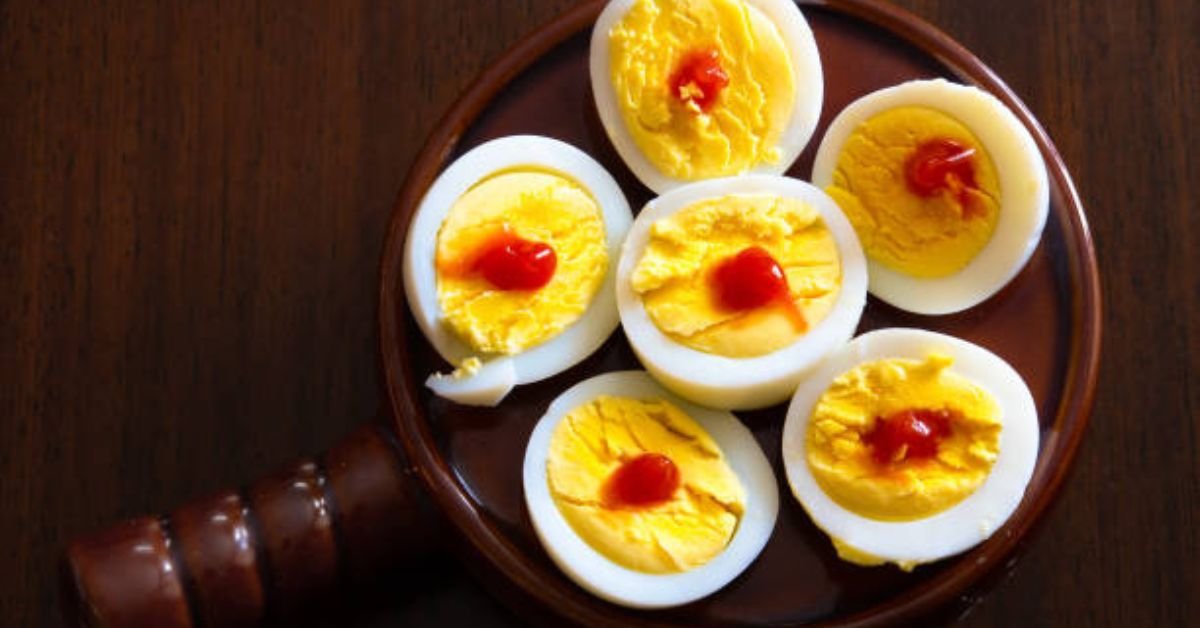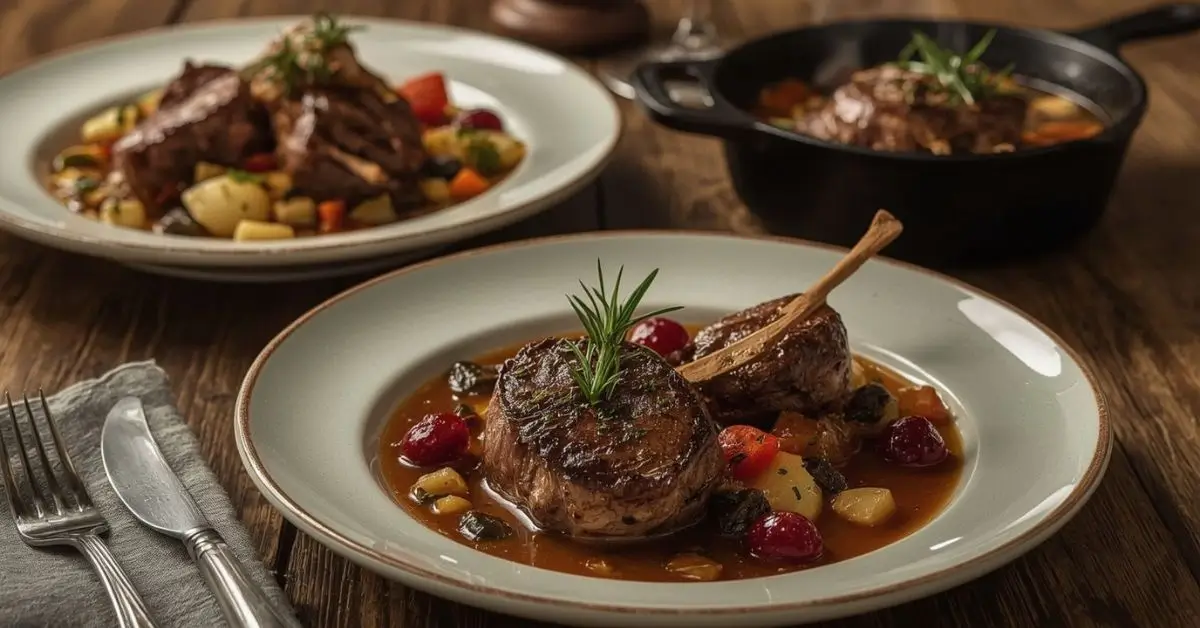FOOD
Shocking Dangers of Tilapia: 5 Alarming Facts

Shocking Dangers of Tilapia why you should never eat tilapia? Maybe you’ve heard rumors about this popular fish, or perhaps you’re just curious about what’s really on your plate. Tilapia is everywhere—from restaurant menus to frozen food aisles. But is it as healthy as it seems? Or is there a hidden side to this fish that the food industry doesn’t want you to know?
Let’s dive deep into the real reasons why you should never eat tilapia—and what you need to know before your next seafood dinner.
The Tilapia Craze: Why Is It So Popular?
Tilapia has become a staple in kitchens worldwide. It’s affordable, mild in flavor, and easy to cook. Many people choose tilapia because it’s low in calories and high in protein. But is this fish really as healthy as it’s made out to be?
Tilapia Calories: The “Healthy” Selling Point Shocking Dangers of Tilapia
One of the main reasons people reach for tilapia is its low calorie count. A typical serving of tilapia (about 100 grams) contains roughly 96 calories. That’s less than many other fish, making it a go-to for dieters and fitness enthusiasts. But calories aren’t the whole story.
Calories for Tilapia: What’s Really Inside?
When you look at the calories for tilapia, you might think you’re making a smart choice. But what about the quality of those calories? Are you getting the nutrients your body needs, or just empty protein?
The Dark Side of Tilapia Farming
Here’s where things get interesting—and a little unsettling. Most tilapia on the market isn’t wild-caught. It’s farmed, often in conditions that would make you think twice about what you’re eating.

Wild Caught Tilapia vs. Farmed: Is There a Difference?
Absolutely. Wild caught tilapia is rare and expensive. Most tilapia comes from massive fish farms, especially in countries with less stringent regulations. These farms often use crowded tanks, questionable feed, and even antibiotics to keep the fish alive.
Real-Life Example: A Shocking Discovery
A friend once told me, “I stopped eating tilapia after seeing a video of a fish farm in China. The water was murky, and the fish barely moved. It just didn’t seem right.” This isn’t an isolated story—many people have had similar experiences after learning about tilapia farming practices.
Health Risks: Why You Should Never Eat Tilapia
Let’s get to the heart of the matter. What are the actual risks of eating tilapia? Here’s what the latest research and expert opinions reveal.
Poor Omega-3 to Omega-6 Ratio
You’ve probably heard that fish is good for your heart because of omega-3 fatty acids. But tilapia is different. It’s low in omega-3s and high in omega-6s. This imbalance can actually promote inflammation in your body, which is linked to heart disease, arthritis, and other chronic conditions.
Calories in Fish Tilapia: Not All Calories Are Equal
While the calories in fish tilapia are low, the type of fat matters more. You’re not getting the heart-healthy benefits you’d expect from eating fish.
Contaminants and Toxins
Farmed tilapia is often exposed to pollutants, antibiotics, and even pesticides. Studies have found traces of harmful chemicals in farmed tilapia, especially from countries with lax regulations. These contaminants can build up in your body over time, increasing your risk of health problems.
Antibiotic Resistance
To keep fish alive in crowded tanks, farmers often use antibiotics. This practice can contribute to antibiotic resistance—a growing global health threat. When you eat tilapia, you could be ingesting antibiotic residues, which may affect your gut health and immune system.
Environmental Impact
Tilapia farming isn’t just bad for your health—it’s bad for the planet. Fish farms can pollute local waterways, destroy natural habitats, and contribute to the spread of disease among wild fish populations.
Tilapia Nutrition: The Pros and Cons
Let’s be fair—tilapia isn’t all bad. It’s a good source of protein and contains some vitamins and minerals. But when you weigh the pros and cons, the risks often outweigh the benefits.
Pros
- Low in calories: Great for calorie counters.
- High in protein: Supports muscle growth.
- Affordable: Fits most budgets.
Cons
- Poor fat profile: Low omega-3, high omega-6.
- Potential contaminants: Risk of toxins and antibiotics.
- Environmental concerns: Unsustainable farming practices.
What About Wild Caught Tilapia?
If you can find wild caught tilapia, it’s a better choice. Wild fish tend to have a healthier fat profile and fewer contaminants. But wild tilapia is rare and often much more expensive. Most of what you see in stores is farmed.
Calories for Tilapia Fish: Is It Worth the Trade-Off?
You might be thinking, “But the calories for tilapia fish are so low!” True, but what are you sacrificing for those low calories? When you factor in the risks, you might decide it’s not worth it.
User Voices: What Real People Are Saying
Here’s a tweet that sums up what many people feel:
“I used to eat tilapia all the time, but after reading about how it’s farmed, I just can’t do it anymore. There are better fish out there.”
Healthier Alternatives to Tilapia
If you’re looking for a healthy, sustainable fish, consider these options:
- Wild-caught salmon: High in omega-3s, low in contaminants.
- Sardines: Packed with nutrients and eco-friendly.
- Mackerel: Another omega-3 powerhouse.
These fish may have more calories than tilapia, but the quality of those calories is much higher.
FAQs
1. Is tilapia healthy to eat?
While tilapia is low in calories and high in protein, most farmed tilapia has a poor omega-3 to omega-6 ratio and may contain contaminants. If you’re concerned about your health, it’s best to choose wild-caught fish with a better nutrient profile.
2. How many calories are in fish tilapia?
A 100-gram serving of tilapia contains about 96 calories. However, the calories in fish tilapia don’t tell the whole story—consider the quality of the fats and potential contaminants.
3. What’s the difference between wild caught tilapia and farmed tilapia?
Wild caught tilapia is generally healthier, with fewer contaminants and a better fat profile. Farmed tilapia is more common but often raised in crowded, unsanitary conditions with the use of antibiotics.
4. Are there safer alternatives to tilapia?
Yes! Wild-caught salmon, sardines, and mackerel are excellent alternatives. They may have more calories, but they offer superior nutrition and fewer health risks.
The Bottom Line
With all the information available today, it’s clear that tilapia isn’t the health food it’s often made out to be. The low calorie count is tempting, but the risks—from poor nutrition to potential toxins—are hard to ignore. If you care about your health and the environment, it might be time to rethink your seafood choices.
FOOD
Can Dogs Eat Broccoli? A Guide to Safe Snacking

Broccoli is a nutrient-rich vegetable that’s packed with vitamins, minerals, and antioxidants. While it’s a healthy snack for humans, its suitability for dogs is a different story. Broccoli contains a group of compounds called glucosinolates, which can be beneficial for humans but potentially toxic to dogs in large quantities.
Can Dogs Eat Broccoli Raw or Cooked?
So, can dogs eat broccoli raw or cooked? The answer is a bit complicated. While cooked broccoli is generally considered safer for dogs than raw broccoli, it’s still important to exercise caution. Raw broccoli contains more glucosinolates, which can cause gastrointestinal upset in dogs.
The Risks and Benefits of Feeding Broccoli to Dogs
As with any new food, it’s essential to weigh the pros and cons of feeding broccoli to your dog. On the one hand, broccoli is a nutrient-rich snack that can provide health benefits. On the other hand, it can cause adverse reactions in some dogs.

Potential Health Risks
Some dogs may experience adverse reactions to broccoli, including:
- Gastrointestinal upset
- Allergic reactions
- Interference with thyroid function
“I was surprised to learn that broccoli can be toxic to dogs. I always thought it was a healthy snack, but now I’m more cautious about what I feed my furry friend.”
How to Safely Feed Broccoli to Your Dog
If you still want to share broccoli with your dog, here are some tips to follow:
- Start with small amounts to test your dog’s tolerance
- Cook broccoli to reduce glucosinolate content
- Avoid adding seasonings or oils that can be toxic to dogs
FAQs
Q: Is broccoli toxic to dogs?
A: Broccoli contains glucosinolates, which can be toxic to dogs in large quantities.
Q: Can dogs eat broccoli florets?
A: Yes, dogs can eat broccoli florets, but it’s essential to introduce them slowly and in small amounts to prevent adverse reactions.
Q: Is steamed broccoli safe for dogs?
A: Steamed broccoli is generally considered safer for dogs than raw broccoli, as it contains fewer glucosinolates.
Q: Can broccoli cause digestive issues in dogs?
A: Yes, broccoli can cause gastrointestinal upset in some dogs, especially if consumed in large quantities.
Conclusion
Can dogs eat broccoli, it’s clear that this veggie is a bit of a double-edged sword. While it can be a healthy snack for humans, it’s essential to exercise caution when sharing it with your furry friend.
FOOD
Hard-Boiled Eggs: How Long Can You Store Them?

Hard-boiled eggs can be a convenient and healthy snack, but they require proper storage to maintain their quality and safety. When stored in the refrigerator, hard-boiled eggs can last for several days. However, it’s essential to follow proper storage guidelines to prevent bacterial growth and foodborne illness.
The Importance of Refrigeration
Refrigeration is crucial in maintaining the quality and safety of hard-boiled eggs. When stored in the refrigerator, hard-boiled eggs should be kept at a consistent temperature below 40°F (4°C). This will help to slow down bacterial growth and keep the eggs fresh for a longer period.
Factors Affecting the Shelf Life of Hard-Boiled Eggs
Several factors can affect the shelf life of hard-boiled eggs, including:
- Storage conditions: Hard-boiled eggs should be stored in a covered container in the refrigerator to prevent moisture and other contaminants from affecting the eggs.
- Handling: Hard-boiled eggs should be handled carefully to prevent cracking or breaking, which can lead to bacterial contamination.
- Age: The age of the eggs before boiling can also impact their shelf life. Fresh eggs will generally last longer than older eggs.
“I always make a batch of hard-boiled eggs on Sunday evening and keep them in the fridge for quick snacks throughout the week. They’re perfect for grabbing on the go!”

Tips for Extending the Shelf Life of Hard-Boiled Eggs
To extend the shelf life of hard-boiled eggs, consider the following tips:
- Store them in a covered container in the refrigerator.
- Keep them away from strong-smelling foods, as eggs can absorb odors easily.
- Use them within a week for optimal quality and safety.
FAQs
Q: How long are hard-boiled eggs good for in the fridge?
A: Hard-boiled eggs can be stored in the fridge for up to 7-10 days. However, it’s essential to check them regularly for signs of spoilage, such as an off smell or slimy texture.
Q: Can I store hard-boiled eggs at room temperature?
A: No, it’s not recommended to store hard-boiled eggs at room temperature. Bacteria can grow rapidly on perishable foods like eggs when they’re not refrigerated.
Q: How can I tell if a hard-boiled egg has gone bad?
A: Check for signs of spoilage, such as an off smell, slimy texture, or visible mold. If in doubt, it’s best to err on the side of caution and discard the egg.
Q: Can I freeze hard-boiled eggs?
A: Yes, you can freeze hard-boiled eggs, but the texture may change. It’s best to freeze them without the shell and use them in recipes where texture isn’t a concern.
Conclusion
Hard-boiled eggs, it’s clear that proper storage and handling are crucial in maintaining their quality and safety. By following the tips and guidelines outlined in this article, you can enjoy your hard-boiled eggs for a longer period while minimizing the risk of foodborne illness.
FOOD
Best Venison Meals You Can Make at Home

Best Venison meals is one of the most underrated meats. High in protein, low in fat, and filled with micronutrients like zinc and iron, it’s often called the “athlete’s red meat.” In fact, nutritionists now highlight high-protein venison meals as excellent options for muscle recovery and sustained energy.
Unlike factory-farmed beef, venison is often sourced sustainably—either through hunting or specialty farms. That gives it a unique position in the modern food world: delicious, ethical, and healthy.
Venison Dinner Recipes for Every Occasion
Whether you’re preparing a holiday feast or just a Tuesday dinner, venison dinner recipes can be surprisingly versatile. Here are a few standouts:
- Classic Venison Chili: Perfect for chilly evenings, rich in beans, tomatoes, and a slow-cooked game flavor that fills the house.
- Venison Shepherd’s Pie: A twist on comfort food, using venison instead of lamb or beef.
- Pan-Seared Venison Steaks: Quick, elegant, and flavorful when paired with garlic butter.
One home cook shared on social media: “I never thought my kids would prefer deer chili over beef, but now it’s all they ask for.” That’s the power of the right recipe.
Wild Game Meals That Impress
Venison is a staple in many cultures’ wild game meals. In Scandinavia, it’s roasted with root vegetables. In the U.S., hunters prepare venison stews in cast-iron pots over open flames. And in modern kitchens, chefs blend traditional cooking with innovative twists—think venison carpaccio or sous-vide venison tenderloin.
What makes venison stand out? Its earthy, rich taste that pairs beautifully with herbs like rosemary, juniper, and thyme. These natural seasonings balance the meat’s boldness while enhancing depth.
Healthy Venison Dishes
If you’re on a wellness journey, healthy venison dishes might be exactly what you need. Since venison has less fat than beef, it works well for calorie-conscious eaters. Pair it with roasted vegetables, whole grains, or even plant-based sides.
Examples of healthy venison meals:
- Grilled venison medallions with quinoa salad
- Venison lettuce wraps with garlic-lime sauce
- Venison and sweet potato skillet
Not only are these meals nutritious, but they also feel gourmet without being heavy.
Easy Venison Recipes for Beginners
Cooking deer meat doesn’t need to be intimidating. In fact, there are plenty of easy venison recipes that even beginners can master:
- Venison Burgers: Season with salt, pepper, and a touch of Worcestershire sauce.
- Venison Tacos: Quick sauté with onion, chili powder, and cumin.
- Stir-Fried Venison: Thin slices tossed with veggies in soy-ginger sauce.
Tip: Don’t overcook! Venison dries out faster than beef, so medium-rare is often the sweet spot.
Venison Slow Cooker Meals
One of the best tricks for tender, juicy meat is using a slow cooker. Venison slow cooker meals are perfect for busy households.
- Slow-Cooked Venison Stew: With potatoes, carrots, and thick broth.
- Shredded Venison BBQ: A healthier twist on pulled pork sandwiches.
- Venison Curry: Rich spices blend with gamey flavors for a warm, comforting dish.
The low-and-slow method allows connective tissues to break down, leaving the meat fork-tender.
The Best Ways to Cook Venison
So, what are the best ways to cook venison? That depends on the cut:
- Backstrap / Tenderloin → Best grilled, pan-seared, or sous-vide.
- Shoulder / Neck → Excellent for braising or slow cooking.
- Ground Venison → Perfect for burgers, tacos, and chili.
General rule: cook hot and fast for tender cuts, or low and slow for tougher ones.
Venison Comfort Food Classics
There’s something special about venison comfort food. It brings nostalgia and warmth to the table:
- Venison meatloaf with mashed potatoes
- Venison pot roast
- Venison stroganoff with creamy mushroom sauce
Comfort food with venison combines the familiarity of home-style cooking with the excitement of wild game flavors.
Venison Steak Recipes
If you love steak, then venison steak recipes will be your go-to. The key is simplicity:
- Pan-seared with butter and garlic
- Grilled with rosemary and cracked pepper
- Marinated in red wine for 24 hours, then grilled medium-rare
Because venison is lean, it benefits from quick, high-heat cooking to lock in juices.
Deer Meat Recipes Beyond the Basics
Not all deer meat recipes are about steaks and stews. Here are some creative twists:
- Venison jerky for snacks
- Venison breakfast sausage
- Venison lasagna with ricotta and herbs
These dishes show how versatile deer meat can be—from quick bites to full family dinners.
High-Protein Venison Meals
Fitness enthusiasts are turning to high-protein venison meals to fuel workouts and recovery. With nearly 25 grams of protein per serving and less fat than beef, venison is a powerhouse.
Great options include:
- Venison stir-fry with broccoli and cashews
- Venison egg scramble for breakfast
- Venison chili with extra beans for post-workout fuel
Athletes often say that venison leaves them energized without feeling heavy.
Pro Tips for Cooking Venison
- Marinate wisely: Acidic marinades (like red wine or balsamic vinegar) tenderize the meat and reduce gamey flavors.
- Don’t overcook: Medium-rare to medium keeps venison juicy.
- Pair with bold flavors: Mushrooms, garlic, and juniper berries balance venison beautifully.
- Rest the meat: Like beef, resting helps redistribute juices.
FAQ’s
What are the best venison meals for beginners?
Easy venison recipes like burgers, tacos, and stir-fry are beginner-friendly. They use ground meat, which cooks quickly and has mild flavor.
How do you make venison taste less gamey?
Marinate with red wine, garlic, or citrus. Pairing venison with bold flavors also helps balance the gamey taste.
Can venison be cooked in a slow cooker?
Yes, tougher cuts like shoulder or shank are perfect for venison slow cooker meals. They become tender and flavorful after long cooking times.
Is venison healthier than beef?
Yes, venison is leaner, lower in cholesterol, and higher in protein. That makes it ideal for those seeking healthy venison dishes.
Final Thoughts
The best venison meals blend tradition, nutrition, and flavor. From venison steak recipes to comfort food classics, venison proves it’s more than just wild game—it’s a versatile, delicious, and healthy option for any table. Whether you’re cooking a quick weeknight dinner, a hearty chili, or a gourmet feast, venison has a place in your kitchen.
-

 TECH6 months ago
TECH6 months agoApple iPhone 17: Official 2025 Release Date Revealed
-

 BLOG6 months ago
BLOG6 months agoUnderstanding the ∴ Symbol in Math
-

 EDUCATION6 months ago
EDUCATION6 months agoHorizontal Translation: How to Shift Graphs
-

 EDUCATION6 months ago
EDUCATION6 months agoUsing the Quadratic Formula
-

 EDUCATION6 months ago
EDUCATION6 months agoThe Meaning of an Open Circle in Math Explained
-

 HEALTH6 months ago
HEALTH6 months agoGoodNever: Wellness, Simplified
-

 EDUCATION6 months ago
EDUCATION6 months agoWhy Does m Represent Slope?
-

 EDUCATION6 months ago
EDUCATION6 months agoHow to Solve Quadratic Equations 2
